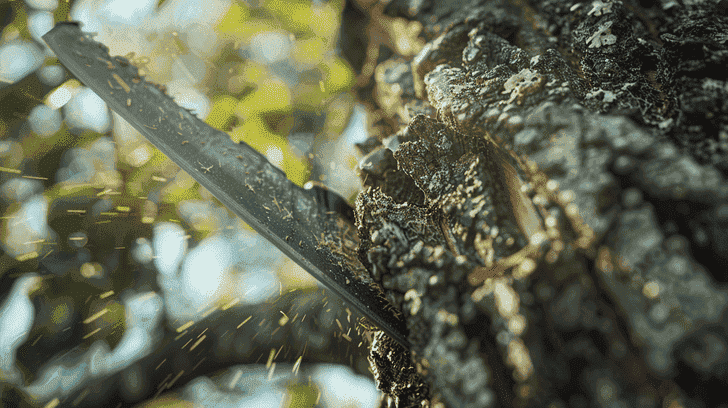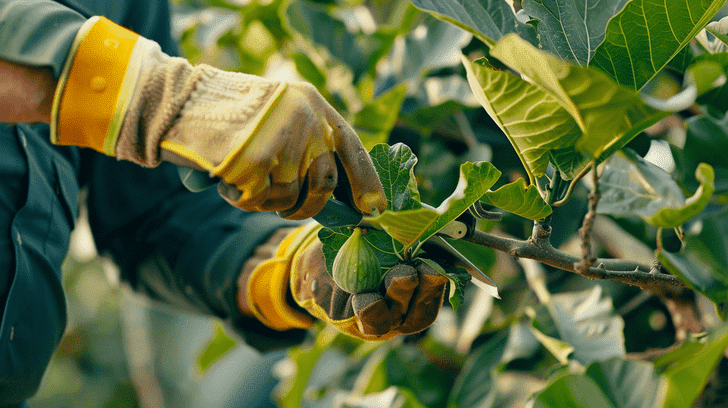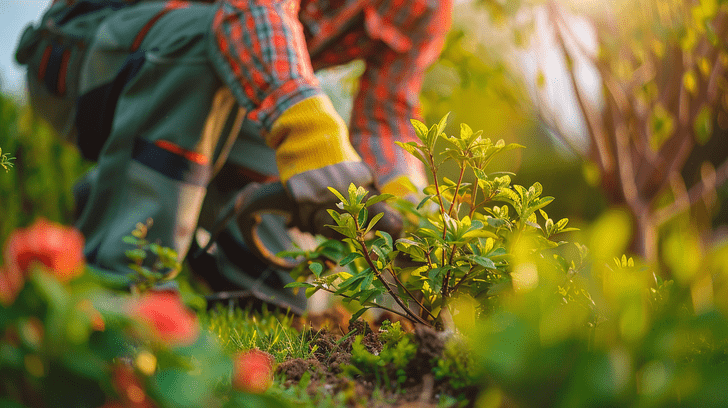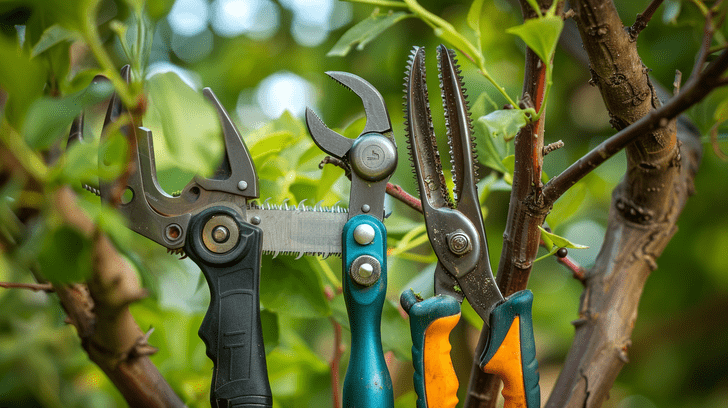What is Tree Trimming? Maintaining a Thriving Landscape
What is tree trimming? In essence, it’s the strategic removal of branches from a tree to achieve specific goals.
This practice is essential for maintaining the health, beauty, and safety of your trees, contributing to a thriving landscape.
Arboriculture, the science of tree cultivation and care, emphasizes the importance of proper tree trimming throughout a tree’s lifespan.
Purposes of Tree Trimming
Tree trimming serves a multitude of purposes, categorised into three main areas: tree health promotion, improved aesthetics and property value enhancement, and safety and hazard mitigation.
Tree Health Promotion: One of the most crucial purposes of tree trimming is to promote optimal tree health.
This involves removing deadwood, diseased branches (often exhibiting signs of fungal diseases or insect infestations), and any damaged branches that could compromise the tree’s structural integrity.
Regular tree trimming allows for better canopy health. By removing these problematic branches, sunlight and air can penetrate deeper into the tree’s crown, fostering a healthier environment and reducing the risk of further disease outbreaks.
Improved Aesthetics and Property Value Enhancement: Tree trimming can significantly enhance the visual appeal of your property.
It allows you to shape the tree’s canopy into a desired form, such as rounded, oval, or espaliered (trained to grow flat against a wall).
This can significantly improve your curb appeal. Trimming also helps control the size and spread of the tree, ensuring it maintains a balanced and aesthetically pleasing presence within your landscape design.
Ultimately, proper tree trimming can contribute to a higher property value by showcasing a well-maintained and visually attractive landscape.
Safety and Hazard Mitigation: Tree trimming plays a vital role in safeguarding your property and ensuring the safety of those around the tree.
This includes removing branches that pose a threat to power lines, buildings, or walkways. Overgrown or weak branches can break during storms or strong winds, potentially causing damage to property or injuring people.
Proactive tree trimming eliminates these hazards, promoting a safer environment for you and your surroundings.
Tree Trimming vs. Tree Pruning: Understanding the Difference
While both practices involve removing branches from trees, it’s important to understand the distinction between tree trimming and tree pruning.
Tree trimming focuses primarily on the aesthetics, shaping, and size control of the tree.
In simpler terms, it’s about enhancing the tree’s visual appeal and managing its growth within your landscape.
In contrast, tree pruning prioritizes the tree’s overall health. This involves removing diseased or deadwood, opening up the canopy to improve air circulation and light penetration, and promoting a strong, balanced growth structure.
Pruning techniques often target specific branches to encourage proper growth and development, ultimately contributing to a longer and healthier lifespan for the tree.
While there can be some overlap between the two practices, understanding the primary goals of each helps determine the most appropriate approach for your tree’s specific needs.
Benefits of Proper Tree Trimming
The benefits of proper tree trimming are far-reaching and contribute to the overall health and value of your trees and property. Here’s a closer look at some key advantages:
Enhanced Tree Health and Lifespan: Regular tree trimming promotes better air circulation within the canopy, which helps prevent the spread of fungal diseases and insect infestations.
Additionally, increased sunlight penetration can stimulate healthier growth and potentially improve fruit or flower production (for fruit trees). Ultimately, proper trimming practices can contribute to a longer and more vibrant tree lifespan.
Increased Property Value and Curb Appeal: Well-maintained trees with a sculpted and aesthetically pleasing appearance can significantly boost your property value.
Homes with mature trees that showcase proper tree-trimming techniques are often viewed as more desirable by potential buyers.
Furthermore, improved curb appeal enhances the overall visual character of your property, creating a more inviting and attractive landscape.
When to Consider Professional Tree Trimming
While DIY tree trimming can be manageable for smaller trees, there are situations where seeking professional help from a certified arborist is highly recommended:
Large, Mature Trees: Large or mature trees often require specialized equipment and advanced techniques for safe and effective trimming. Certified arborists possess the necessary expertise and tools to handle these jobs correctly.
Situations with Power Lines or Structures nearby: Trimming branches near power lines is extremely dangerous and should only be attempted by qualified professionals. Arborists have the training and experience to safely navigate these situations and minimize the risk of electrical hazards.
Uncertainty About Proper Trimming Techniques or Tree Health Concerns: If you’re unsure about the proper trimming techniques for your specific tree species or have concerns about its overall health, consulting a certified arborist is the best course of action. They can assess the tree’s condition, recommend the most appropriate trimming approach, and address any potential health issues.
Conclusion
Tree trimming is a valuable practice for maintaining healthy, beautiful, and safe trees. By understanding the various purposes and benefits of tree trimming, you can make informed decisions about caring for your trees.
If you have any doubts or are dealing with complex situations, don’t hesitate to consult a certified arborist. Their expertise can ensure your trees receive the proper care they need to thrive for years.
FAQ
What does trimming the tree mean slang?
There isn’t a common slang term specifically for tree trimming. However, depending on the context, you might hear someone use:
“Giving the tree a haircut” to refer to a light trimming that focuses on shaping the canopy.
“Taking out some dead weight” if the trimming involves removing large, dead branches.
What are the disadvantages of tree trimming?
While tree trimming offers many benefits, there can be some downsides if not done properly:
Improper trimming techniques can damage the tree, making it more susceptible to disease and hindering its growth.
Over-trimming can weaken the tree and reduce its ability to produce leaves and flowers (for fruit trees).
Trimming at the wrong time of year can stress the tree and make it more vulnerable to pests and diseases.
When should a tree be pruned?
The ideal time to prune a tree depends on the species and the purpose of the pruning. However, here are some general guidelines:
Late winter or early spring: This is a good time for most trees as they are still dormant and less susceptible to stress.
After flowering: Pruning after a tree has finished flowering can help promote new growth and flower bud formation for the following season (especially for flowering trees).
Summer pruning: This can be done for some tree species to control size or remove diseased branches.
However, it’s generally not recommended for most trees as it can stress them during the hot weather.
What are the 5 rules of pruning?
Make clean cuts: Use sharp bypass pruners or loppers to make clean cuts just above a bud or outward-facing branch for optimal regrowth. Avoid ragged tears or stubs.
Start with the “3 D’s”: Prioritize removing dead, diseased, and damaged branches first. These branches do not contribute to the tree’s health and can harbour pests and diseases.
Thin, don’t shear: Aim to thin out crowded branches rather than shearing off large sections of foliage. This allows for better air circulation and light penetration within the canopy.
Maintain a balanced canopy: Avoid removing too much foliage from one side of the tree, as this can destabilize it. Aim for a balanced and natural-looking shape.
Know your tree species: Different tree species have specific pruning requirements. Research the best practices for your particular tree to ensure proper care.







